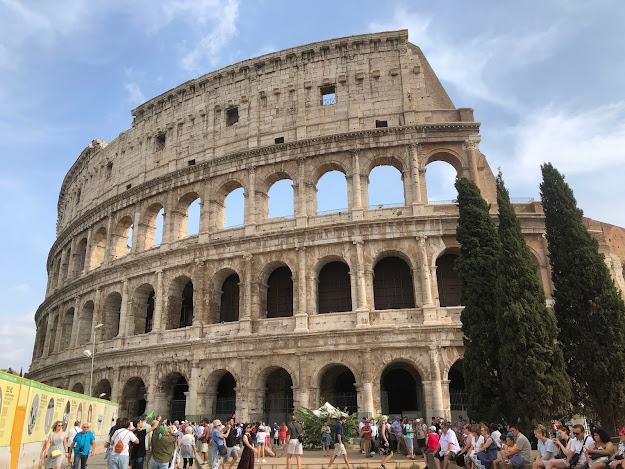すべての道は永遠の都ローマに通ず All roads lead to the eternal city of Rome
すべての道はローマに通ず、と言われる。
では、目の前の道をずっと辿っていけば、いつかはローマにたどり着くことができるのだろうか?
ローマが共和制になったのが紀元前509年。紀元前27年にアウグストゥスによって帝政が始まり、その後の東西分裂を経て、コンスタンチノープルがオスマン帝国に攻め込まれて東ローマ帝国が滅亡したのが1457年。
共和制と帝政を合わせると、実に2000年もの長きに渡り存続して、常に世界の情勢に大きな影響を与え続けたことになる。
こんな国家あるいは政治体制は、他には見当たらない。
古代ローマの痕跡は、コロッセオやフォロ・ロマーノなど、現在もローマの町に残っている。
そうした古代ローマの遺跡に対する私のイメージは、ヴェネツィア出身の版画家ピラネージの細密な版画作品によって形成された。
今回の旅では、そうした遺跡を訪ねて、古代ローマのことを少しでも肌で感じたかった。
併せて、時代はずっと降るが、バロックの芸術家ベルニーニの彫刻作品や、教会に飾られたカラヴァッジオの絵画作品を見てみたかった。
さらに、新教国スウェーデンの女王でありながら、カトリックに改宗して晩年をローマの地で過ごしたという、クリスティーナ女王に所縁の場所も訪れてみたかった。
It is said that all roads lead to Rome.
So, if we keep following the road in front of us, will we be able to reach Rome someday?
Rome became a republic in 509 BC. Augustus started the empire in 27 BC, and after the subsequent East-West Schism, Constantinople was attacked by the Ottoman Empire and the Byzantine Empire was destroyed in 1457.
When the republic and the imperial government are combined, it has survived for as long as 2000 years and has always had a great influence on the world situation.
There is no other nation or political system like this.
Traces of ancient Rome still remain in Roman towns, such as the Colosseum and the Roman Forum.
My image of such ancient Roman ruins was formed by the detailed prints of the Venetian printmaker Piranesi.
On this trip, I wanted to visit such ruins and feel the ancient Rome as much as possible.
At the same time, as time goes by, I wanted to see the sculptures of Baroque artist Bernini and the paintings of Caravaggio in the church.
In addition, I wanted to visit a place related to Queen Christina, who was the Queen of Sweden, a Protestant country, who converted to Catholicism and spent her later years in Rome.
(Translated by Google Translate)



コメント
コメントを投稿